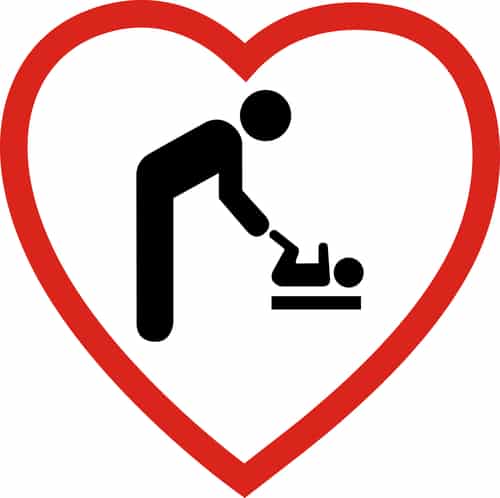40 Unusual Facts You May Not Know About The Titanic
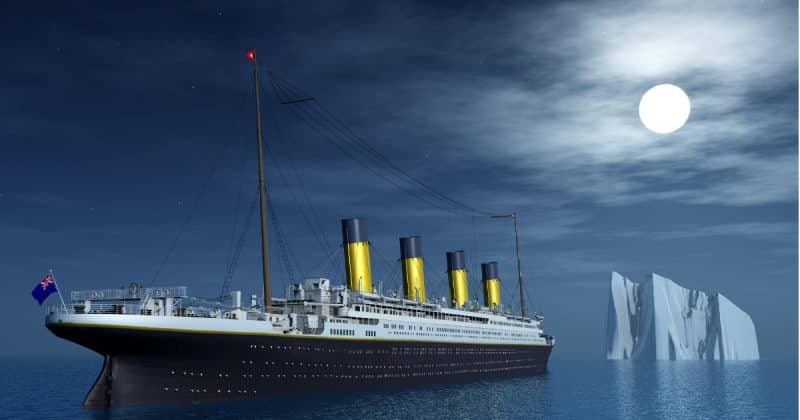

We all sobbed watching Rose and Jack’s doomed love affair play out on the big screen. And many of us have watched documentaries about divers exploring the wreckage. But how much do we really know about the Titanic? The legendary RMS Titanic set sail from Southhampton on April 10, 1912. Her maiden voyage to New York was cause for much celebration; after all, the Titanic was one of a kind and the construction and preparation of the ship garnered world-wide attention. But, as we all know, she never made it to New York. Tragedy struck four days into the voyage. And on April 15, 1912, the ship that should sank off the coast of Newfoundland.
Much has been said and written about the RMS Titanic. We know about the ship herself, about the passengers, about the mistakes made early in the voyage that led to the disaster. However, there’s also a lot we didn’t know! Even over 100 years later, we’re learning new and interesting facts about her and her passengers. Divers continue to explore the wreckage, looking for clues about the passengers that boarded the Titanic with hopes and dreams, only to perish in the cold sea. For history buffs, and casual fans like us, the Titanic continues to reveal her mysteries.
When she embarked on the journey to New York in 1912, the RMS Titanic was the largest passenger ship in the world.
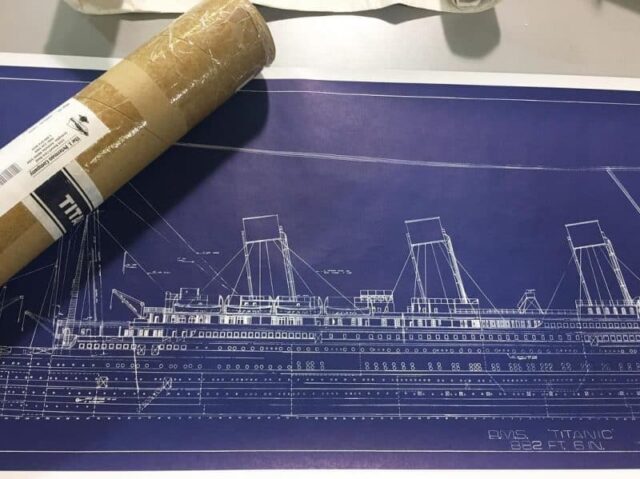

The White Star Line authorized construction to begin on the Titanic in 1908 to compete with rival Cunard, who had recently launched the Lusitania and the Mauretania. The ship was launched in 1911, then towed to a fitting-out berth where engines and superstructure were installed and the interior finished over the next year. Upon completion, she was the largest passenger ship in the world at 882.9 feet, weighing in at 46,328 tons. Today, the largest passenger ship in the world is the Harmony of the Seas, which is a staggering 1,188 feet long. But for four short days, Titanic was the champion of the seas.
The interior of the ship was loosely based on The Ritz London.


Some of the biggest perks of traveling on the Titanic were the opulent interiors (first class only, of course). When the ship was being designed and built, inspiration for the interior decor was drawn from the interior of The Ritz London, a swanky hotel for the rich and famous. The ship had several over-the-top features, including a squash court, a gym, a pool, a Turkish bath, and kennels for first class dogs. She even had her very own newspaper, the Atlantic Daily Bulletin. Seems odd until you remember that the trip from England to New York would have taken at least a week.
The first class passengers on the Titanic had access to quite a lot of booze.


The ship had approximately 8,000 cigars, 1.500 bottles of wine, and 20,000 bottles of beer on board when it embarked on the week-long journey to New York. For 2,240 people (including crew), that seems like a reasonable amount of booze! But the good stuff was reserved for first class passengers only. Of the 2,240 ticketed passengers aboard the ship, there were only 325 first class passengers – 175 men, 144 women, and 6 children. That works out to about 24 cigars, 4 bottles of wine, and 61 bottles of beer per person. Assuming, of course, that the kids fancied a cigar and a brandy after dinner.
Of course, the cost of a first class ticket on the Titanic could explain why there were so few first class passengers.
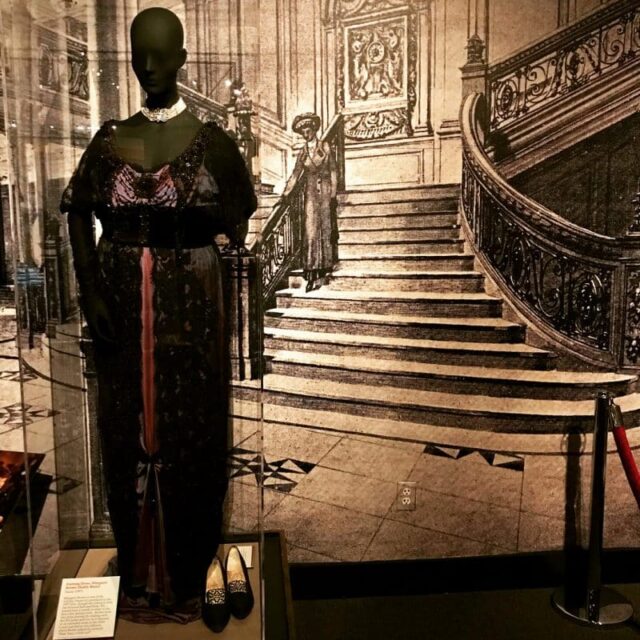

There were three different class levels of tickets for the voyage – first, second, and third class. Third class tickets ranged from $15-40, while second class tickets were about $60. But the first class tickets were expensive! You could travel in first class for about $150, which got you a simple private room and access to the first class decks and dining rooms (plus cigars and booze, obviously). But there were also tickets for extravagant two-parlor suites, which cost a staggering $4,350. To put that in perspective, a top-of-the-line first class ticket on the Titanic would run about $50,000 today.
Maybe a cat could’ve changed the course of history?


When the Titanic embarked on the journey to New York, she held more than just human passengers. Aside from rats (of which there were plenty in steerage), there were 12 dogs along for the trip. Of those 12 dogs, only 3 survived – 2 Pomeranians and a Pekingese. Interestingly, there were no cats on board. This was strange for a couple of reasons. One, ships routinely boarded a few cats to help control the rat population while at sea. Second, there was a longstanding naval tradition of bringing a cat on a ship for good luck. We’re not exactly superstitious, but what if…?
The man behind Hershey’s chocolate was supposed to be on that fateful voyage.


The Titanic held its share of notable passengers. But one man who was supposed to be aboard the ship for the trip to New York avoided an icy fate when work intervened. Milton Hershey had put $300 down toward a first class ticket on the ship after spending the winter in France. However, work beckoned him home, so he and his wife caught an earlier ride on the Amerika. In another odd twist of fate, the ship Hershey was traveling on was one of the ships that sent an ice warning to the Titanic before she departed. So not only did Hershey narrowly avoid disaster on the Titanic, he was actually on the ship that tried to warn the crew.
First class passengers had quite the last meal.
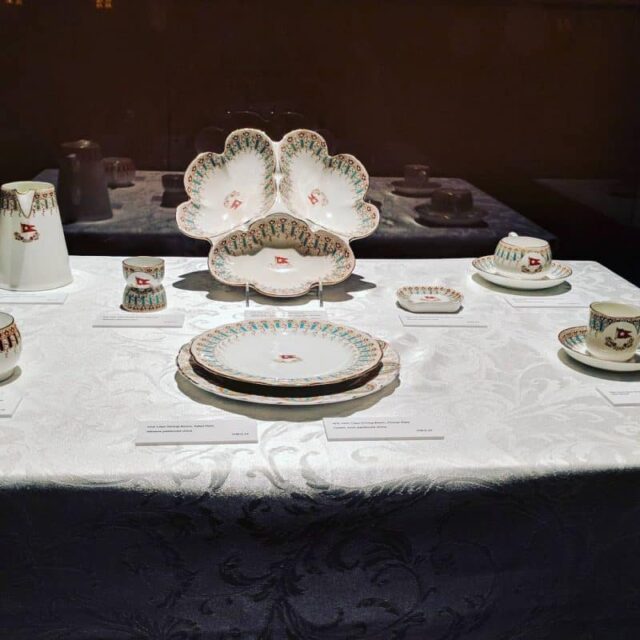

Each meal served in the first class saloon was noteworthy for its opulence and decadence. Obviously, if you paid over $4000 for a ticket on that ship, you wanted your trip to reflect that! While the second and third class passengers dine on pedestrian fare, first class ticket holders feasted like kings. The last meal served in the first class saloon was really something. It consisted of 11 courses, and included Waldorf pudding, peaches in chartreuse jelly, chocolate and vanilla eclairs, and French ice cream for dessert. Dinner had long since concluded when the ship hit the iceberg, but it sounds like at least some of the ship’s passengers were satisfied that evening.
The first class passenger list read like a Who’s Who of society life.
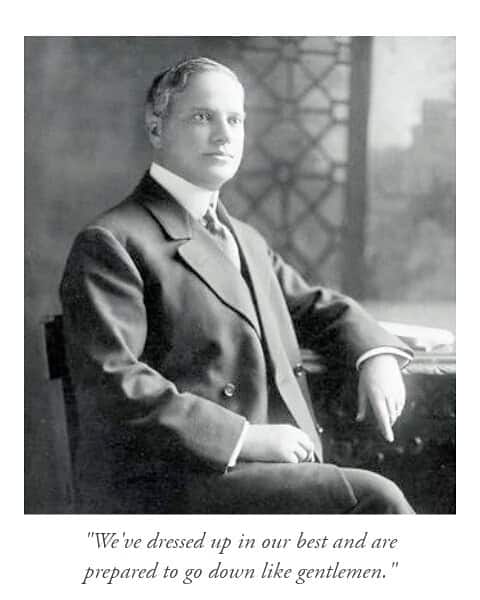

With first class ticket prices topping out at over $4,000, it’s no wonder some of the richest people in the world were aboard the Titanic for that voyage. Plus, many of those people were interested in the status symbol of having sailed on the world’s biggest passenger ship on her first voyage. The richest man on the ship was John Jacob Astor IV, who had a net worth of about $85 million (about $2 billion today). He died in the disaster. Benjamin Guggenheim, an American businessman, also perished that night. Alfred Gwynne Vanderbilt had a ticket but did not make the trip; ironically, he died on the Lusitania three years later.
The crew of the Titanic was woefully unprepared for the voyage.
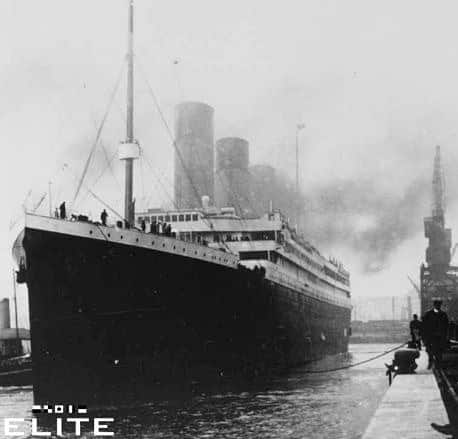

Despite construction on the ship wrapping up almost a full year before her first voyage, the crew on the Titanic was was rushed into preparing for it. They had only seven days to get ready. A ship of that size traveling that far should have been readied months in advance. To make sure they were ready to leave on time, Captain Edward John Smith cancelled lifeboat training. It was never rescheduled, and never conducted. The crew on the ship had never rolled out the lifeboats before, or practiced emergency procedures. The night the Titanic hit the iceberg and began to sink was the first time the crew had ever attempted to roll out the lifeboats.
The lifeboats played a huge role in the scale of the disaster.
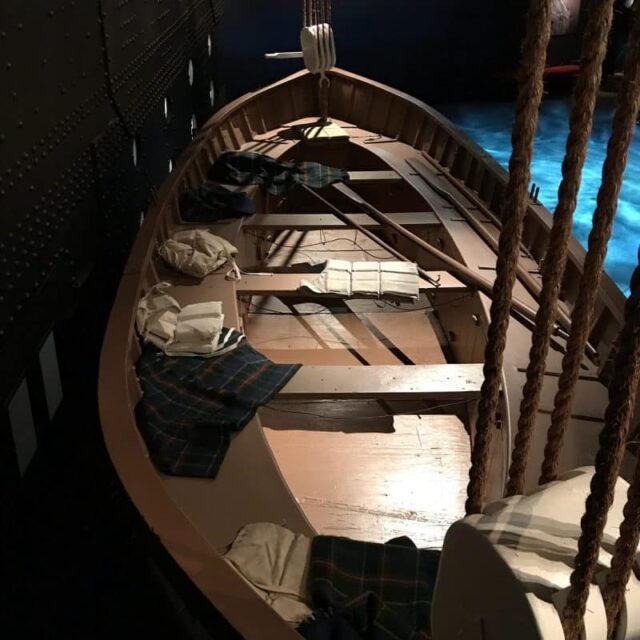

Remember, there were over 2,000 people aboard the ship, including the crew. Yet the Titanic was only equipped with 20 lifeboats (16 wooden boats and 4 collapsible boats). The amount of lifeboats on the ship was only enough to accommodate 1,178 people, or one-third of the capacity of the ship. Shockingly, 20 boats was actually four more than the legally required amount. White Star Line president Bruce Ismay was quoted as saying, “extra boats simply would clutter up the beautiful open expanse of the upper deck, where first-class passengers would want to stroll.” The lack of lifeboats certainly contributed to the high death toll after the ship struck the iceberg and sank.
14 years before the tragedy of the Titanic, a book was written that seemed to predict it.
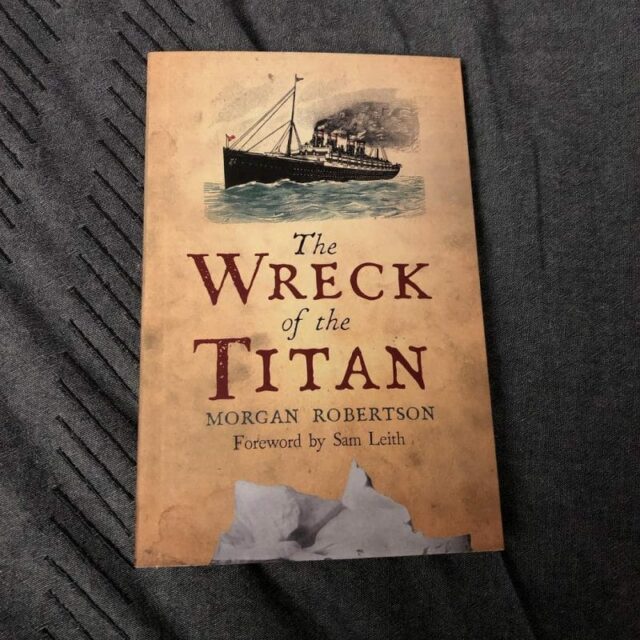

American author Morgan Robertson wrote a book called “Futility: The Wreck of the Titan” in 1898. The novel was about a British cruise named the Titan, which struck an iceberg on its maiden voyage and sunk, taking down all passengers and the entire crew. In the book, the ship was considered “unsinkable”, much like the Titanic. It also hit an iceberg in the North Atlantic in April, and a lack of lifeboats also contributed to the deaths of more than half the passengers. The book was written a full 14 years before the Titanic struck that iceberg off the coast of Newfoundland. That’s either one really eerie coincidence, or Robertson’s book foreshadowed what would happen on that fateful night in 1912. Even the names of thew boats were similar!
Human error definitely contributed to the disaster, but the iceberg probably would have proven dangerous to any ship that crossed its path.
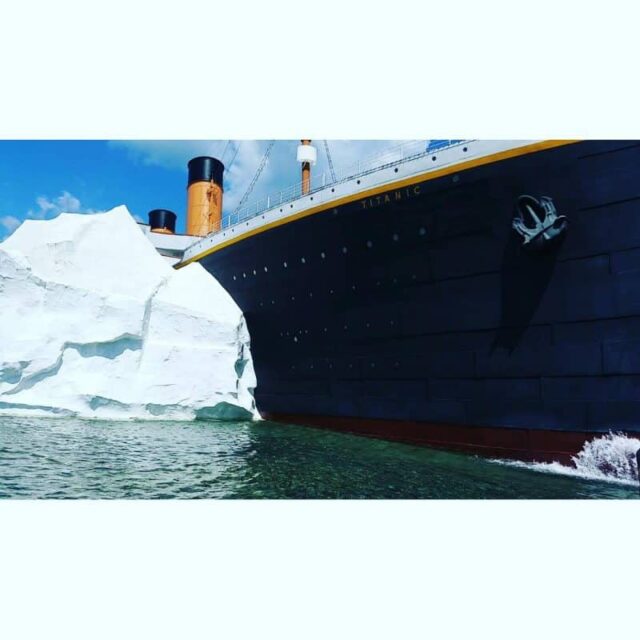

Icebergs are incredibly dangerous to ships and sailors, since you can only see as little as one-eight of its mass above water. However, the iceberg that the Titanic hit was even more difficult to spot in the sea at night. It’s now believed that the iceberg was actually a blackberg, also known as a blue iceberg. In the daytime, blackbergs look more blue than white, hence the name. But at night, without the sun to reflect off the surface, blackbergs are similar to black ice. They can’t be seen until you’re very close to one. It’s believed that no one spotted the iceberg until it was far too late, and the fact that it was a blackberg might have contributed to that.
However, by the time the iceberg was spotted, human error made things worse.


Frederick Fleet was the lookout assigned to the crow’s nest that night. He didn’t have any binoculars with him, relying instead on just his eyesight to watch for obstacles in the ship’s path. When he spotted the iceberg, it was already on a near-collision course with the Titanic. He called to the bridge to announce the warning. But First Officer William Murdoch waited a full 30 seconds before giving the order “hard a starboard”. Approximately one minute lapsed between Fleet spotting the iceberg and the collision, and that 30 second delay likely made avoiding hitting the iceberg impossible.
The Titanic hit the iceberg a little before midnight on April 14. But it didn’t sink for about 2 1/2 hours.


The captain turned the boat hard right to try to avoid collision. Ironically, scientists believe that a head-on collision would have been far less disastrous. Instead, the ship struck the iceberg along the starboard side, rupturing five of its compartments. In another ironic twist, five was the tragic magic number – if only four of the compartments had ruptured, the ship would have stayed afloat. As each compartment filled with water, it spilled over into the next compartment, and so on. The watertight bulkheads in the ship only extended 2/3 of the way through the ship, instead of all the way down. So as more compartments filled with water, the ship began to list forward, until the front was submerged. Then, the weight of the portion extended in air cause it to snap in half.
Even with events unfolding slowly, it still took an hour for the first lifeboat to launch from the ship.
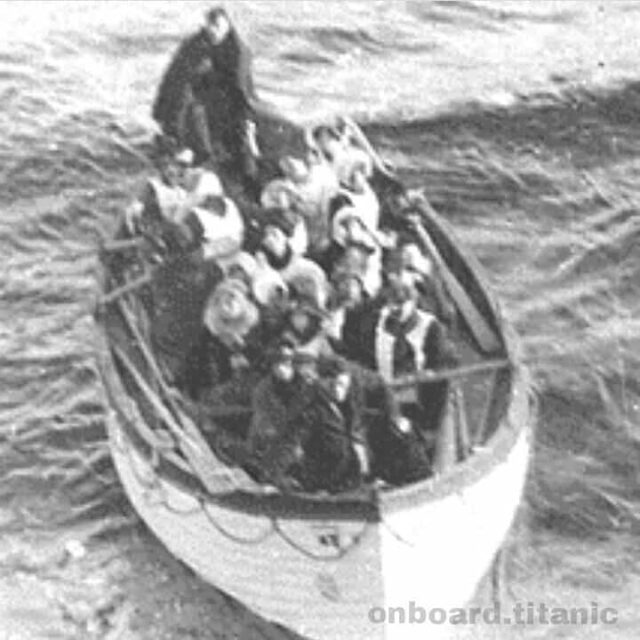

You may remember the scenes from The Titanic, with passengers milling about on the upper decks as disaster unfolded in the compartments and engine rooms. While the movie took several dramatic liberties, historical accounts recall similar scenes as the ship slowly sank into the Atlantic. Plus, let’s remember, the crew was untrained and unprepared to actually unroll the lifeboats and help passengers disembark. So while compartment after compartment filled with water, passengers were slowly loaded onto lifeboats, and an hour after striking the iceberg the first boat finally went out into the water.
Passengers on the promenade deck who witnessed the collision played with chunks of ice as they rained down onto the deck.


First class passenger Edith Rosenbaum Russell was just making her way onto the promenade deck when she noticed the iceberg. She said, “As I got out onto the promenade deck, I saw a large grey, what looked to me like a building, floating by. But that ”building” kept bumping along the rail, and as it bumped it sliced off bits of ice and that ice fell all over the deck. We just picked up the ice and started playing snowballs, we thought it was fun. We asked the officers if there was any danger, and they said, ”Oh, no, nothing at all, nothing at all, nothing at all. Just a mere nothing. We just hit an iceberg.'” No biggie!
Not only were there not enough lifeboats on board, but they weren’t even properly loaded.
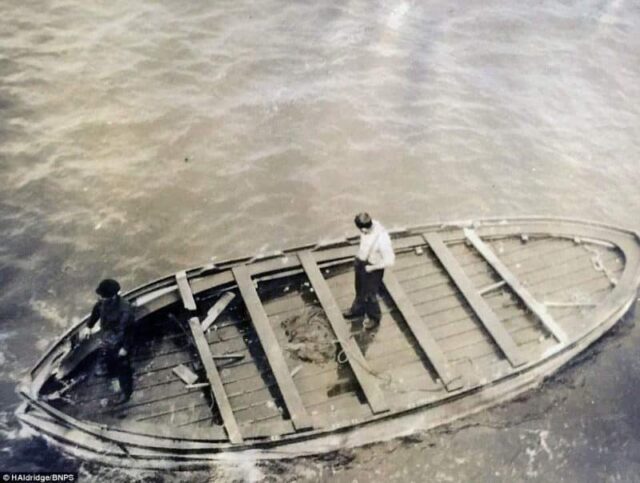

There were only 20 lifeboats on the Titanic, for over 2,200 passengers and crew. So clearly, even if they had been loaded properly, the loss of life would have been extensive. But half the lifeboats were launched from the ship only half full. Of the 2,240 people on board, only 705 people survived. Had the lifeboats been filled to capacity, nearly 1,200 more lives could have been saved that night. Women and children supposed to be loaded first, although some boats went out with men who were on the ship with a first class ticket. The process was rife with chaos and disorganization.
With all the lifeboats deployed, the remaining passengers were left on the ship. At 2:20 a.m. on April 15, it broke in half, sending the passengers into the freezing waters.
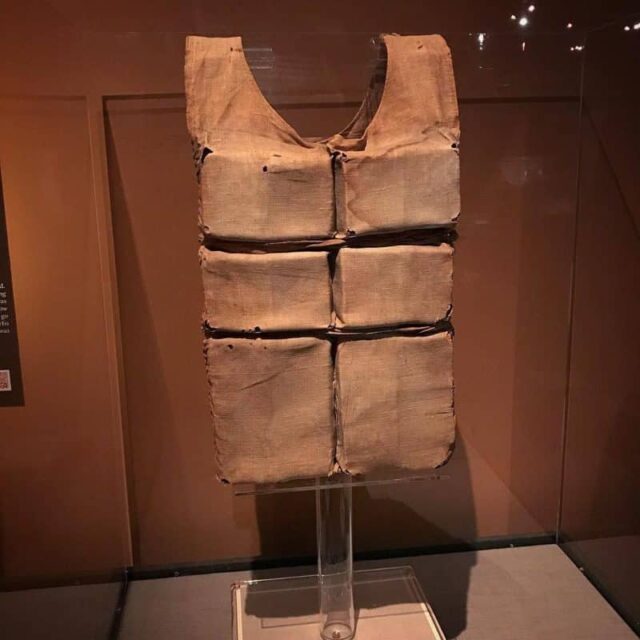

Once the ship broke in half, it created a vacuum in the water as it plunged to the depths. Passengers still on the ship were thrown into the sea. The Atlantic would have been around -2 degrees Celsius. Few people would have survived in those temperatures for longer than 15 minutes, but around half of them probably died from cold shock within two minutes of hitting the water. There were enough life jackets on board for all 2,240 passengers, and nearly everyone was wearing one. So the majority of the dead perished from being submerged in the cold Atlantic waters.
The ship’s baker may have saved his life with whiskey.


The Titanic’s chief baker Charles Joughin helped load passengers onto lifeboats after the ship struck the iceberg. Afterward, he drank a very large amount of whiskey, having resigned himself to going down with the ship. Honestly, we would have done the same! Miraculously, Joughin survived the Titanic disaster, and was rescued after treading water for approximately two hours. He suffered no ill-effects from his time in the freezing ocean waters, and credits his survival to the very large amount of whiskey he drank before he went in. He reportedly claimed that he didn’t feel cold while he waited in the water to be rescued. So if you’re in danger of plunging into freezing cold water, maybe chug some whiskey!
The Titanic claimed lives before it even got into the water.
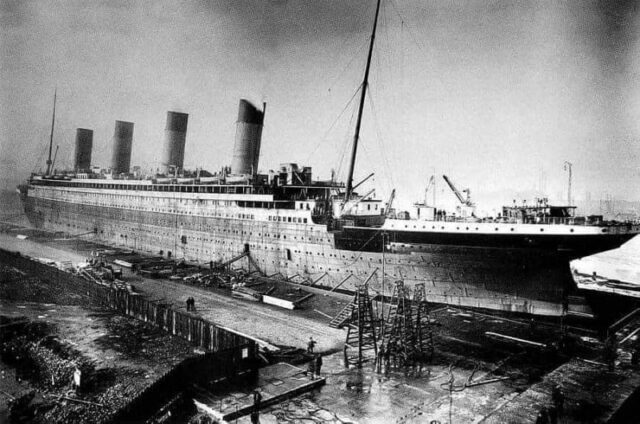

It took 26 months to build the Titanic in Belfast, Ireland. During construction, there were several severe and less severe accidents. Eight people lost their lives working to build the ship, and another 246 workers were injured. There were thousands of men working to build the Titanic, and it cost the equivalent of over $100 million today. Interestingly enough, there was a common expectation in shipyards of the time, that one man would die for every $132,000 spent on a build. So, even though eight deaths might sound like a lot, it was actually less than the expected 15 deaths for the cost of the entire build.
Of the 913 crew members on board, only 215 survived.
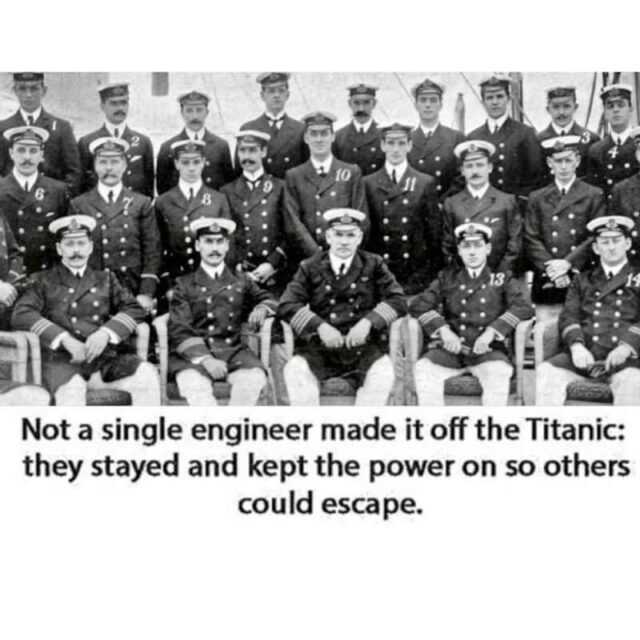

Thomas Andrews, who designed the ship, died in the disaster. He originally argued for more lifeboats to be added, and told the captain that the ship was doomed after surveying the damage. First Officer William Murdoch, who ordered the ship to turn too late, went down with the ship. There’s a memorial to him in his hometown of Dalbeattie, Kirkcudbrightshire, Scotland. Captain Edward Smith also perished that night; his last words were, “Well boys, you’ve done your duty and done it well. I ask no more of you. I release you. You know the rule of the sea. It’s every man for himself now, and God bless you.”
After the Titanic struck the iceberg, news began to spread, but it was misreported everywhere.


The ship hit the iceberg just before midnight on April 14, and by 2:20 a.m. on April 15, it had sunk. But news traveled much differently back then, so when the first reports started to make their way to the public on April 15, they were full of errors. Part of this was due to White Star Line putting out misleading information. Many publications went forward with the hazy details on April 15. The London Daily Mail ran a headline that said “No Lives Lost”. Another publication said “All Saved from Titanic After Collision”. The New York Times also expressed skepticism about the reports they were getting, but still ran a story that said “All Titanic Passengers Safe; Towing to Halifax”. It would be days before the reality of the tragedy was reported.
Another scene from The Titanic that struck a chord with people was the musicians playing on the deck as they ship sank. Turns out, that really happened.
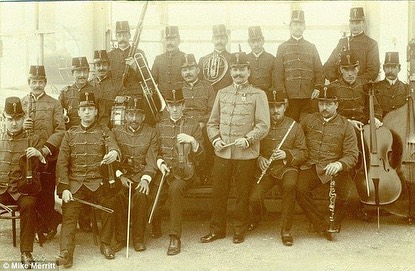

There were two bands aboard the Titanic for her voyage, to play music on the decks and in the saloon for first class passengers during dinner and socializing. In the movie, we see a group of musicians resign themselves to their fate and set up their instruments as panic whirled around them. It was one of the more moving scenes in the movie, but it was hard to know if it really happened. But it did! The bands continued to play as people were boarded onto lifeboats and moved to safety, They played for two hours and five minutes as the ship was sinking. All members of both bands went down with the Titanic, and perished in the sea.
There was another ship nearby that ignored the Titanic’s distress signals.
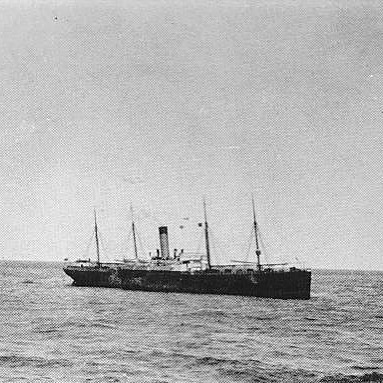

The SS Californian was just 20 miles away, where it had stopped to avoid the ice. The captain of that ship, Stanley Lord, saw the distress signal and flares go up from the Titanic but ignored them, thinking they were just regular signals between ships. The Californian had also turned off its wireless machine for the night, because the radio operator had gone to sleep. By the time they received the SOS signals the next morning and returned to the scene, all they found were bodies floating in the ocean. Ironically, the Californian was sunk three years later by a German submarine.
The RMS Carpathia arrived a couple of hours after Titanic sank.
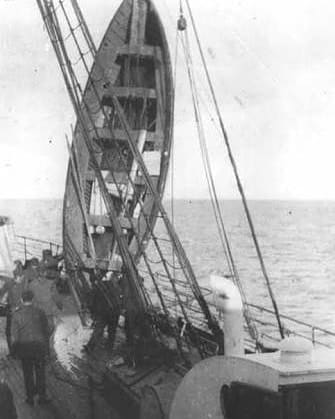

The survivors who managed to make it onto lifeboats floated in the dark, cold sea for hours after the ship sank. Some people managed to survive in the water, by holding onto floating debris. When the Carpathia finally arrived at 4 a.m., they began loading up the survivors for transport. Only 706 passengers survived the disaster, and they were taken to New York on the Carpathia. When they pulled into the dock at Pier 54, more than 40,000 people were there to greet their arrival. Once on land, they began the arduous task of identifying the survivors, and reuniting them with family.
After the survivors were rescued, other boats arrived to begin the recovery mission.


More than 1,500 people died in the Titanic disaster. But sadly, only 306 bodies were recovered. The recovery boats were equipped with ice and coffins to transport the dead back to shore. Only first class bodies were removed from the water. The other 116 bodies that were found were attached to weights and buried at sea. Rescuers reported finding people floating vertically in the ocean, as if they were asleep. They were checked for identification, and either removed or weighted down. The dead were taken to Halifax, Nova Scotia. There’s now a maritime museum there, with an exhibit that include a deck chair from the wreckage, mortuary bags, and the shoes of an unidentified victim.
After the disaster, people were quick to assign blame.
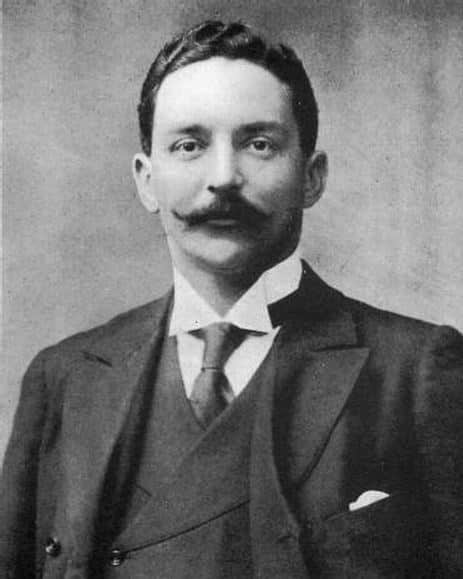

As news began to spread and people were made aware of the scope of the disaster, attention turned to those in charge. Crew members who sacrificed themselves to help save passengers were hailed as heroes. However, one man in particular earned the wrath of the world in the wake of the disaster. J. Bruce Ismay was the chairman of White Star Lines, and was actually the one who originally insisted on having fewer lifeboats on board the ship. As the ship was sinking, Ismay jumped onto a lifeboat, ahead of many women and children, as well as men who stayed behind to helped facilitate the evacuation. He was vilified in the press and called a coward for his actions.
The Titanic was carrying some pretty interesting cargo.


It’s pretty common knowledge that the ship was designated as a Royal Mail Service ship. On that fateful voyage, she was carrying 2,500 pounds of mail on board. But in addition to the mail (and the dogs!), she was also carrying some pretty neat stuff. Most notable was a Renault car (you might remember that steamy scene in the movie). But the Titanic was also carrying 12 cases of ostrich feathers, and 76 cases of dragon’s blood tree sap. While many items have been recovered from the wreckage over the years, it’s kind of crazy to think about all that was lost in the disaster.
Even though the Titanic sank in 1912, the wreckage wasn’t discovered until 1985.
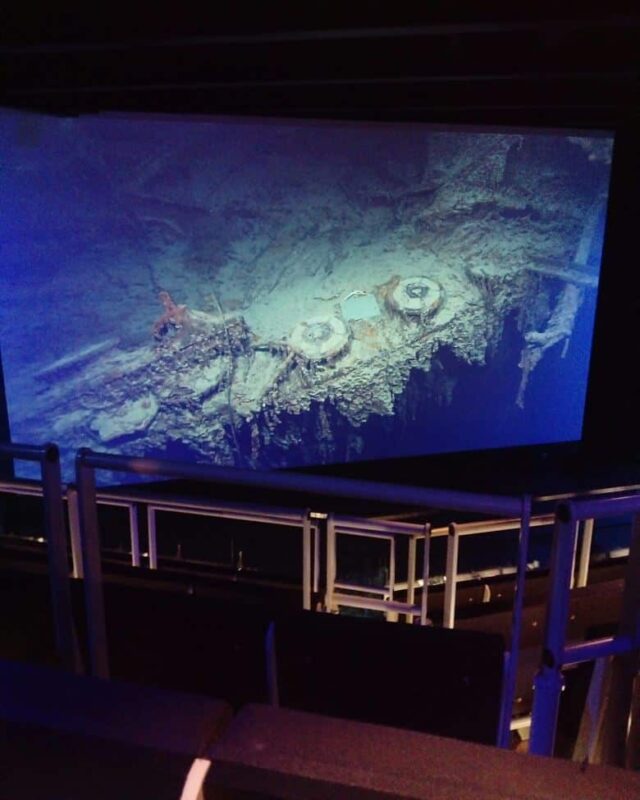

In 1985, underwater explorer Robert Ballard located the wreckage of the Titanic. It was located 370 miles off the coast of Newfoundland, and was settled on the ocean floor 12,500 feet below the surface. After 73 years, finding the Titanic had become something of a Herculean task, and it was considered the Holy Grail of underwater exploration. After a week without any sight of the ship, Ballard and his team were growing dejected. But then their robot’s live feed picked up a grainy image of the ship’s boiler. They were thrilled, and erupted in cheers. Champagne was opened to commemorate the occasion. But then they realized the time: 2:20 a.m., the exact time the ocean liner had sunk and taken the lives of more than 1,500. Ballard says, “We were embarrassed we were celebrating. And all of a sudden we realized that we should not be dancing on someone’s grave.”
Robert Ballard had mixed feelings about finding the ship he’d been looking for all those years.


You’d think that he would be elated over having done what no one else had been able to do. And while he was happy to have found the wreckage, there were other emotions involved, too. Ballard wrote, “It was one thing to have won””to have found the ship. It was another thing to be there. That was the spooky part. I could see the Titanic as she slipped nose first into the glassy water. Around me were the ghostly shapes of the lifeboats and the piercing shouts and screams of people freezing to death in the water.”
The exploration crew used unmanned submarines to photograph the wreckage.
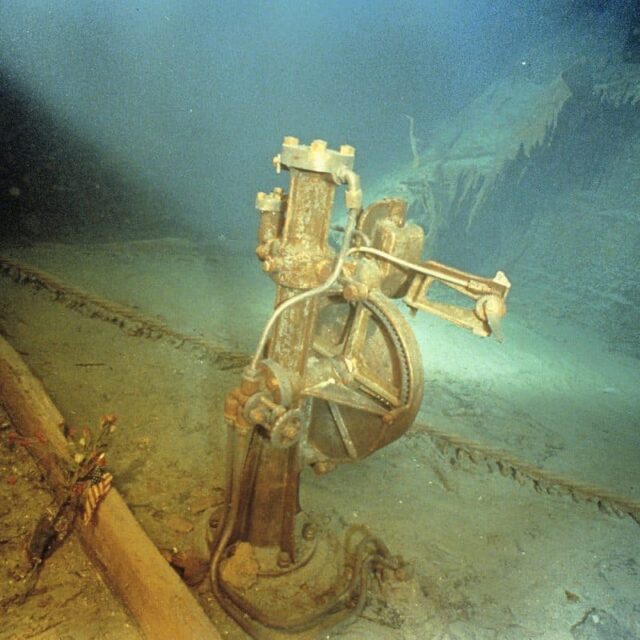

Robert Ballard and his crew used two submarines, Argo and Angus, to photograph the massive ships. They captured images of the hull, the mast, and even the crow’s nest where Frederick Fleet first saw the iceberg that night. They were able to see inside the wreckage, through a hole from a missing skylight. The subs photographed some amazing artifacts on that first exploration. There was fine china in pristine condition, pieces of furniture, and even an entire unopened box of champagne. But the time the Titanic had been discovered, ocean scavengers had consumed any human remains. But the team did find many pairs of shoes scattered along the ocean floor.
Despite being the first person to find the Titanic, Robert Ballard became a fierce opponent of salvaging artifacts from the wreckage.
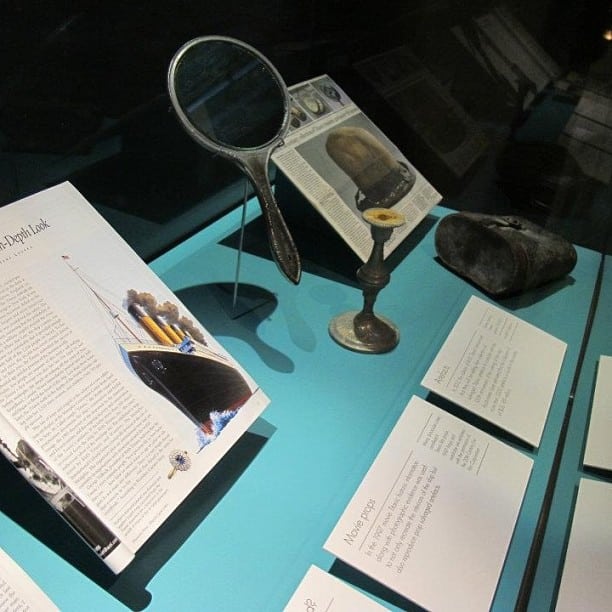

In his first press conference after finding the ship, Ballard stressed the important of treating the ship and her contents with reverence. He said, “The Titanic lies now in 13,000 feet of water on a gently sloping alpine-like countryside overlooking a small canyon below. There is no light at this great depth and little life can be found. It is a quiet and peaceful place””and a fitting place for the remains of this greatest of sea tragedies to rest. Forever may it remain that way.” Several teams have since explored the Titanic, and many artifacts have been brought to the surface to display in museums and exhibits around the world.
The remains of the Titanic still lie at the bottom of the Atlantic. But they may soon disappear forever.


After over 100 years submerged in frigid ocean waters, the Titanic has deteriorated greatly. Ocean currents and microorganisms have contributed to the breakdown. But there may soon come a time when the wreckage is gone forever – the remains are literally being eaten. Explorers discovered a new rust-eating bacteria in the ship’s hull, called halomonas titanicae. At this rate, scientists predict that the bacteria, currents, and microorganisms will completely consume what’s left of the ship’s wreckage in around 20 years. It’s crazy to think that such a large part of history, something that’s captivated millions of people around the world for over 100 years, could one day be gone.
But plenty of Titanic artifacts and memorabilia remain.


In 2012 RMS Titanic Inc., a division of Premier Exhibitions, held an auction of items salvaged from the Titanic. The collection of items had been priced at a whopping $189 million. It included 5,500 artifacts from the ship and her passengers, as well as photographs and video footage of the ship during recovery efforts. Some of the artifacts up for bid included china, silverware, clothing, diamond jewelry, and personal items belonging to passengers. People could also bid on decorative items from the ship, and even pieces of the Titanic herself. One item that was expected to fetch big bucks was the final lunch menu for the ship’s first class passengers. People like Benjamin Guggenheim may very well have eaten that meal.
True fans (with a lot of money) still have the chance to see the Titanic before she disappears forever.
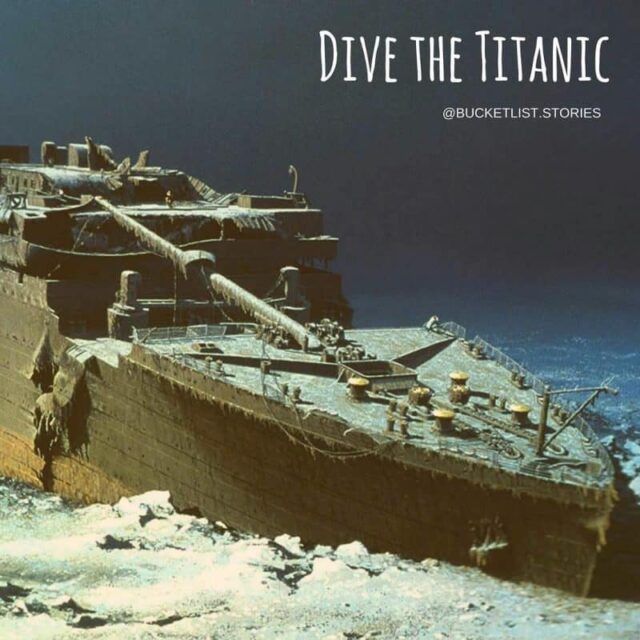

For some people, it isn’t enough to collect the artifacts and memorabilia from the Titanic. They want to see her up close and personal. In May 2018, a company called Blue Marble Private began offering 8-day dive tours of the wreckage, to give people a chance to experience it in person. But these tours aren’t cheap! For $105,129 per person, Blue Marble Private will take you two miles beneath the surface of the sea in a submarine, where you can gaze upon the skeletal remains of what was once the world’s biggest and most luxurious ocean liner. Another company, Bluefish, offers a similar tour for $58,680.
It’s been over 100 years, but people are still coming up with theories for why the Titanic hit that iceberg that night.


In 2012, Donald Olson of Texas State University-San Marcos came up with a plausible theory about why the iceberg was in the path of the Titanic to begin with, and it has to do with the moon. Olson says, “That full moon, on January 4, 1912, may have created unusually strong tides that sent a flotilla of icebergs southward””just in time for Titanic”˜s maiden voyage.” Additionally, according to National Geographic’s Richard A. Lovett, it wasn’t just any regular ol’ full moon. Lovett wrote, “It was the closest lunar approach, in fact, since A.D. 796, and Earth won’t see its like again until 2257.”
Another theory also blames Mother Nature for why other ships were so slow to spot the Titanic and send help.
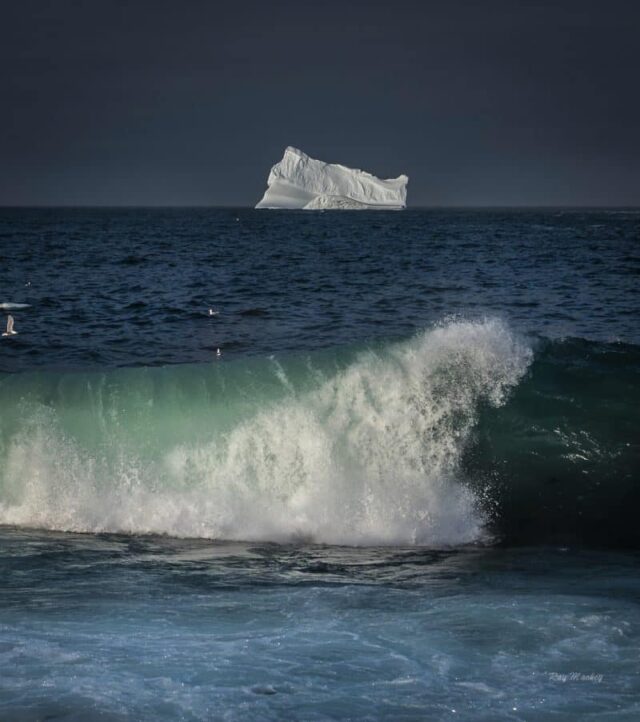

British historian Tim Maltin blames the atmosphere on the night of April 14, 1912. He believes it created conditions that made it difficult for the Titanic to spot the iceberg, as well as for other ships to spot the Titanic. Smithsonian Magazine reported, “Atmospheric conditions in the area that night were ripe for super refraction, Maltin found. This extraordinary bending of light causes miraging, which, he discovered, was recorded by several ships in the area. He says it also prevented the Titanic’s lookouts from seeing the iceberg in time and the freighter Californian from identifying the ocean liner and communicating with it.”
The last survivor of the Titanic disaster died in 2009.
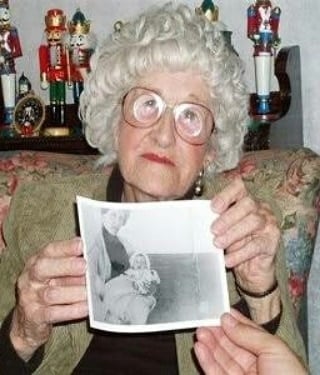

Millvina Dean was only two months old when she boarded the ship to journey to New York. Her family was planning on emigrating from England to Wichita, Kansas. She was the youngest passenger aboard the ship. The Dean family was not even supposed to be on the Titanic – they were transferred to it from another ship during a coal strike. They were third class passengers on the journey, and were among the few third class passengers to survive the disaster. Millvina, her mother Georgette, and her brother Bertram were loaded onto lifeboat 10, and made it to safety. Her father, Bertram Frank, did not survive. Toward the end of her life, she was forced to sell some of her Titanic memorabilia to pay medical bills. She died on May 31, 2009, at the age of 97.
Several movies and documentaries have been made about the Titanic. But this one was by far the most controversial.


Believe it or not, Joseph Goebbels (yes, THAT Joseph Goebbels) once commissioned a Nazi Titanic movie to be used as German wartime propaganda in 1943. The film features a German hero in the role as the ship’s First Officer, and used real German marines as extras. It blames the sinking of the Titanic on greedy profit-seeking Brits, like the ship’s owner J. Bruce Ismay. It also disparaged other wealthy passengers on board, blaming them for the deaths of lower class passengers. The film was an absolute disaster (pun intended), and Goebbels eventually banned it after deciding that the tragic images would be demoralizing to the German population.
The movie we all know and love, James Cameron’s Titanic, had made an insane amount of money worldwide.
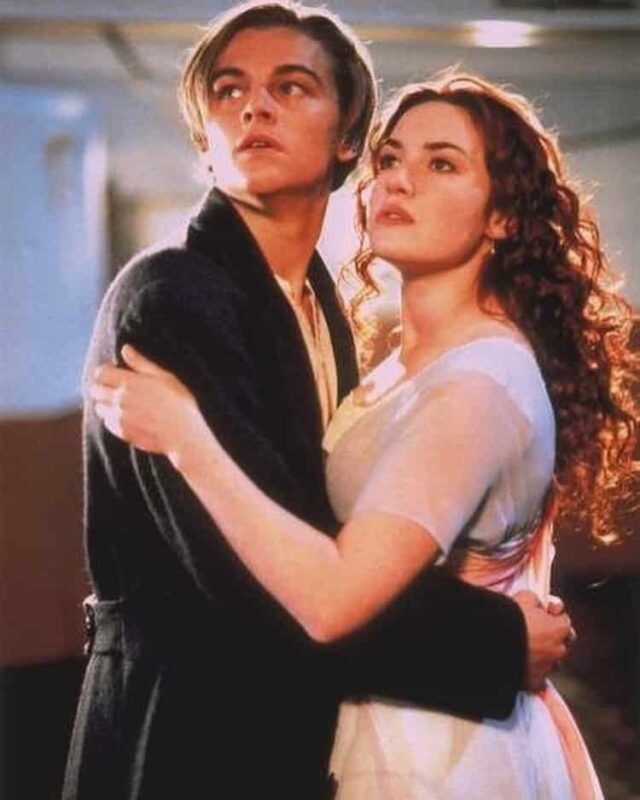

To date, the film has made approximately $1.84 BILLION worldwide since its release in 1997. And that’s just the movie! That doesn’t include merchandising or money made from the soundtrack. According to the California ScienCenter, it would cost about $400 million to build the Titanic today. So, James Cameron’s movie has made enough money to build 4.6 complete replicas of the ship. That’s bananas! But there’s still so much interest in the Titanic disaster. In fact, the historic dock in Belfast where the Titanic was built is still standing, and is in fact one of the most popular local attractions in the area.





